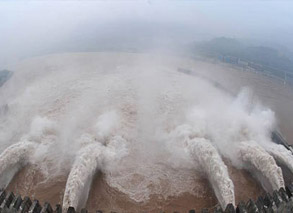[China on the move] From Gansu: New tech preserves ancient caves
2009-09-08 13:26 BJTSpecial Report: 60th Anniversary of PRC |
Watch Video

 Play Video
Play Video
The Thousand Buddha Caves in the oasis city of Dunhuang on the ancient Silk Road are a museum of religion and art. Known as Mogaoku in Chinese, they are on the UNESCO list of World Cultural Heritage. But today the priceless murals, which have survived the centuries, are in danger. Our reporter Wang Mangmang finds out what are being done to preserve them.
Touching history. This is Su Bomin and his colleagues at work. Restoring every detail of the murals could take them hours or days. It seems an endless endeavor, but they're never bored.
Su Bomin, Restoration Chief of Dunhuang Academy, said, "For tourists or people who are not in close contact with them, they may simply be paintings. But for us, they are alive. They are animated. And from a professional point of view, we see more information. Its artistic feeling, its diseases, or what caused it to be like this."
The murals in the Mogao caves require the experts to understand the historical, religious, and artistic background of the original work. The paintings must be kept authentic.
Su Bomin said, "The principle is repairing the old to the way it was. Our job is to make it look as though we’ve done nothing. This is the best result."
The name Mogaoku means peerless caves. From the fifth to fourteenth centuries, monks and Buddhist worshippers created some eight hundred caves off the cliff. Sizes vary, but all are cut rock. The sandstone deteriorates over time.
Damage also comes from modern perils of mass tourism where humidity from the breaths of visiting crowd can impair the delicate murals that have survived for centuries in an arid desert climate.
The threats are complex. But these laboratories are state of the art. Experts can analyze every single component of the paint, simulate conditions inside the caves, and identify all substances retrieved from the relics. This helps them keep authenticity in their restorations.

 Mail
Mail Share
Share Print
Print


 Video
Video









 2009 China Central Television. All Rights Reserved
2009 China Central Television. All Rights Reserved